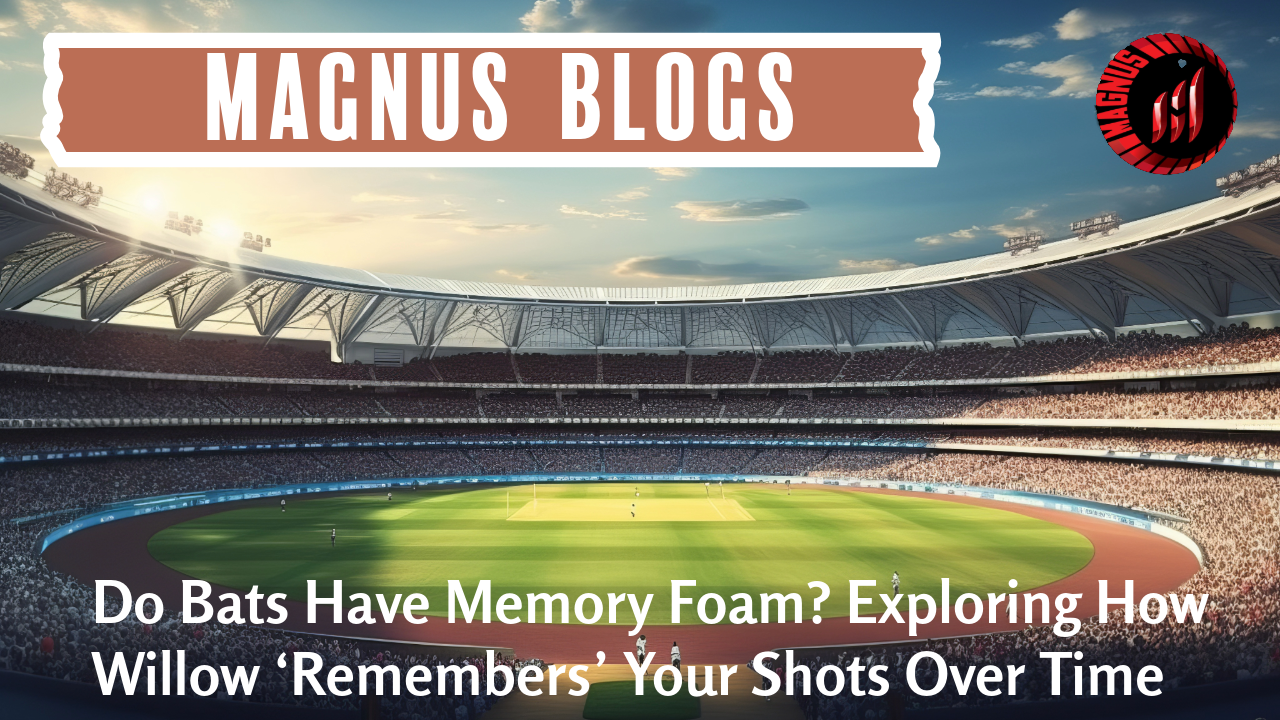Cricket bats, especially those made from high-quality English or Kashmir willow, are prized for their responsiveness, balance, and power. But what if your bat does more than just deliver shots — what if it learns them? Could it be possible that over time, a bat starts to “remember” your playing style, adapting in subtle ways like memory foam under pressure?
It’s a poetic idea — but one rooted in some very real material science.
The Living Nature of Willow
Unlike metal or plastic, willow is a living, natural material. Even after being cut, cured, and pressed into a bat, the wood continues to respond to moisture, pressure, and repeated use.
-
Willow is fibrous and slightly elastic.
-
Every impact compresses those fibers slightly.
-
Repeated stress on the same area can cause micro-changes in how that part of the bat behaves.
In other words, the bat evolves — and potentially becomes more tuned to the shots you play most often.
Can a Bat “Learn” Your Shots?
Think about your own playstyle. Maybe you're a front-foot dominant batter who favors cover drives. Or perhaps you pull and cut off the back foot all day. If you’re consistently making contact in certain zones of the bat, especially within or near the sweet spot, the willow in those areas may gradually compress more deeply than elsewhere.
What This Means:
-
The sweet spot might expand or shift slightly based on repetitive impact.
-
The bat may begin to feel “softer” or more “forgiving” on your preferred shots.
-
Players often describe their well-used bats as “broken in” — this may be more literal than we thought.
Just like memory foam responds to your body and then rebounds, willow fibers deform and slowly reshape under constant stress. Unlike memory foam, however, these changes are mostly permanent — meaning the bat is slowly molding to your game.
Is This Why Some Players Stick to One Bat?
Top players often use a single bat for long stretches of a season. Even when they have multiple custom-made options, they’ll gravitate toward the one that “feels right.” While part of this is psychological, there’s also a physical truth: the bat has been conditioned by their hands, their shots, and their timing.
-
Changing to a new bat resets the feel.
-
A seasoned bat, conditioned by repetition, may be more in sync with the player’s instincts.
-
Some cricketers believe that their bat has a “soul” — maybe that’s not so far off.
Does This Memory Have a Limit?
Yes — like all natural materials, willow has its limits. Too much compression over time can:
-
Flatten the sweet spot
-
Diminish rebound or ping
-
Cause internal cracking
-
Lead to dead spots or imbalance
That’s why maintenance — like regular oiling, careful knocking-in, and proper storage — is key to preserving your bat’s memory, not damaging it.
Can This Be Measured?
There’s growing interest in using sensors to study bat performance changes over time. Companies working on smart bats may eventually provide data on how impact zones change, sweet spot shifts, and wood fatigue progresses. Until then, most players rely on feel — and that feel is surprisingly precise.
If your cover drives are getting cleaner, and your bat sounds different when struck in your favorite zone, it might be because your bat has been listening — and remembering.
Cricket bat types, Cricket equipment in usa, Cricket equipment store, Cricket gloves, Cricket helmet, Cricket kit bags, Cricket retailers, Durable cricket gloves, English willow bats, Icc approved helmets., Kashmir willow cricket bat, Latest kashmir willow bat
